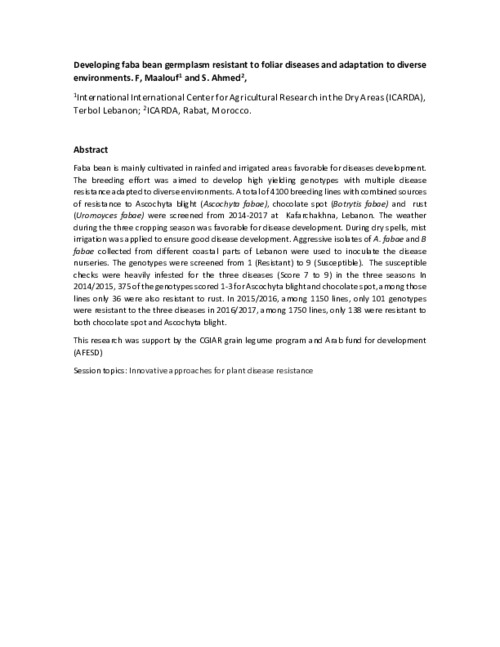Developing faba bean germplasm resistant to foliar diseases and adaptation to diverse environments
Abstract
Faba bean is mainly cultivated in rainfed and irrigated areas favorable for diseases development.
The breeding effort was aimed to develop high yielding genotypes with multiple disease
resistance adapted to diverse environments. A total of 4100 breeding lines with combined sources
of resistance to Ascochyta blight (Ascochyta fabae), chocolate spot (Botrytis fabae) and rust
(Uromoyces fabae) were screened from 2014-2017 at Kafarchakhna, Lebanon. The weather
during the three cropping season was favorable for disease development. During dry spells, mist
irrigation was applied to ensure good disease development. Aggressive isolates of A. fabae and B
fabae collected from different coastal parts of Lebanon were used to inoculate the disease
nurseries. The genotypes were screened from 1 (Resistant) to 9 (Susceptible). The susceptible
checks were heavily infested for the three diseases (Score 7 to 9) in the three seasons In
2014/2015, 375 of the genotypes scored 1-3 for Ascochyta blight and chocolate spot, among those
lines only 36 were also resistant to rust. In 2015/2016, among 1150 lines, only 101 genotypes
were resistant to the three diseases in 2016/2017, among 1750 lines, only 138 were resistant to
both chocolate spot and Ascochyta blight

